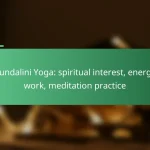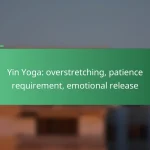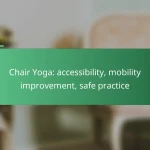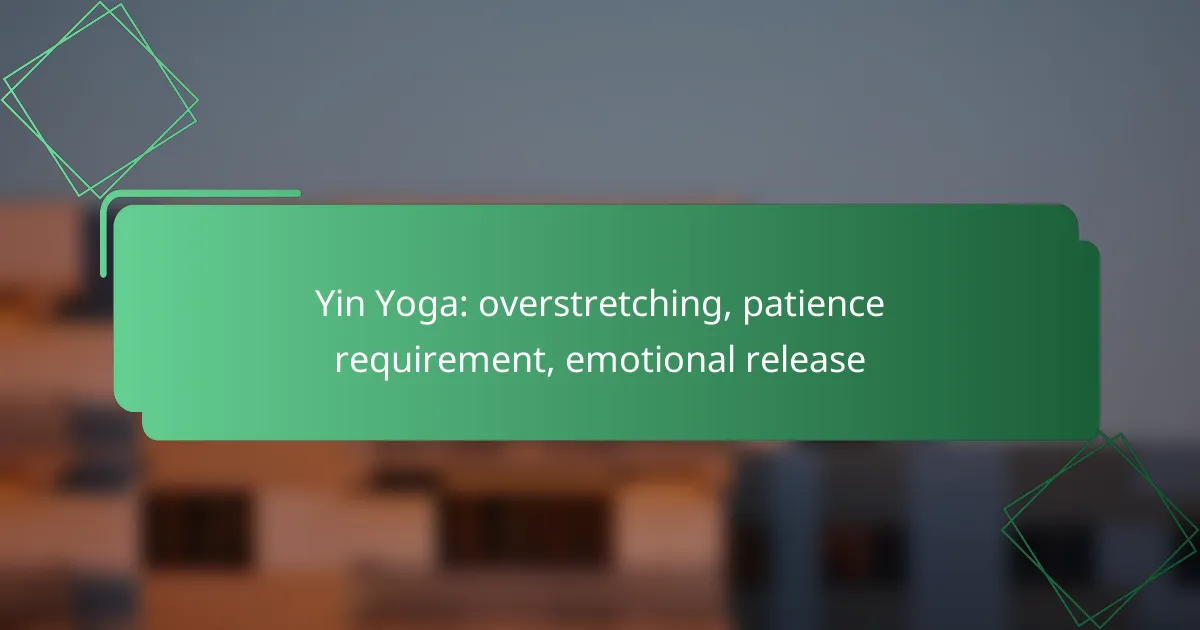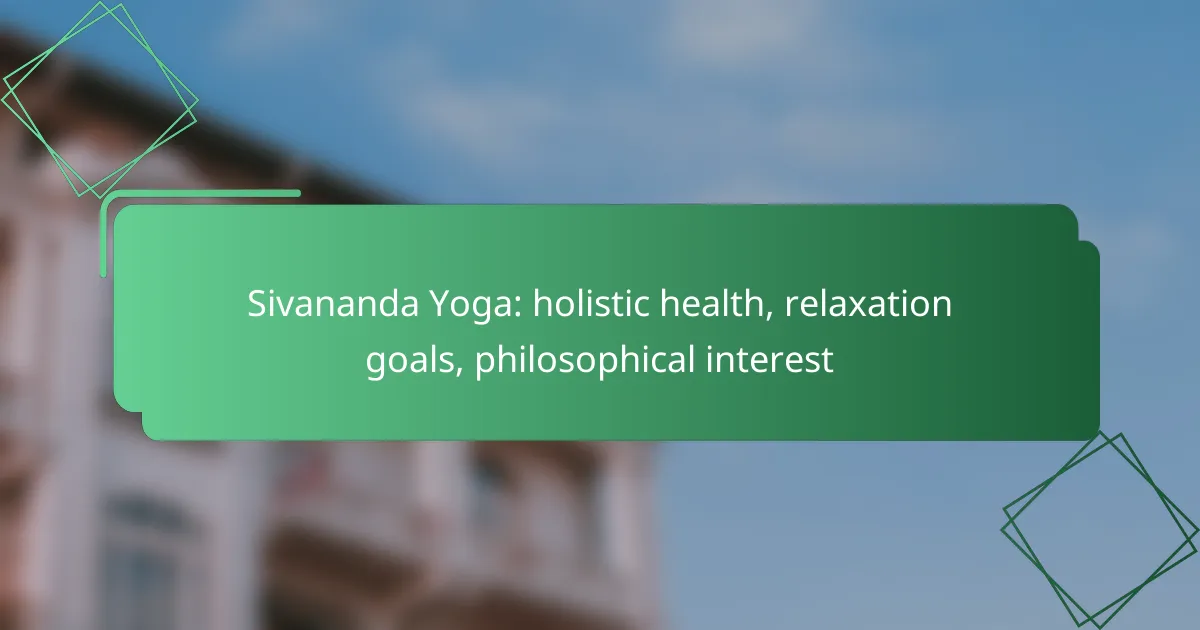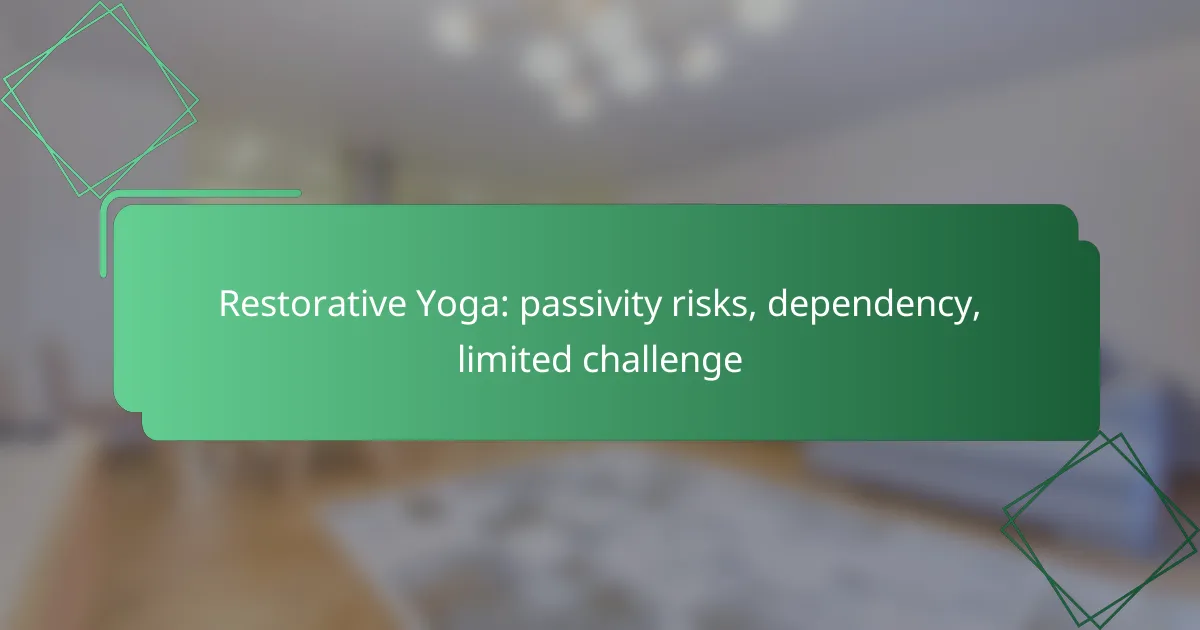Yin Yoga is a gentle practice that emphasizes slow, mindful movements and deep relaxation, helping to prevent overstretching by encouraging practitioners to listen to their bodies. This form of yoga requires patience, as poses are held for extended periods, fostering deep stretching and emotional release. Through its introspective nature, Yin Yoga allows individuals to connect with their feelings, creating space for emotional energy to surface and facilitating the processing of pent-up emotions.
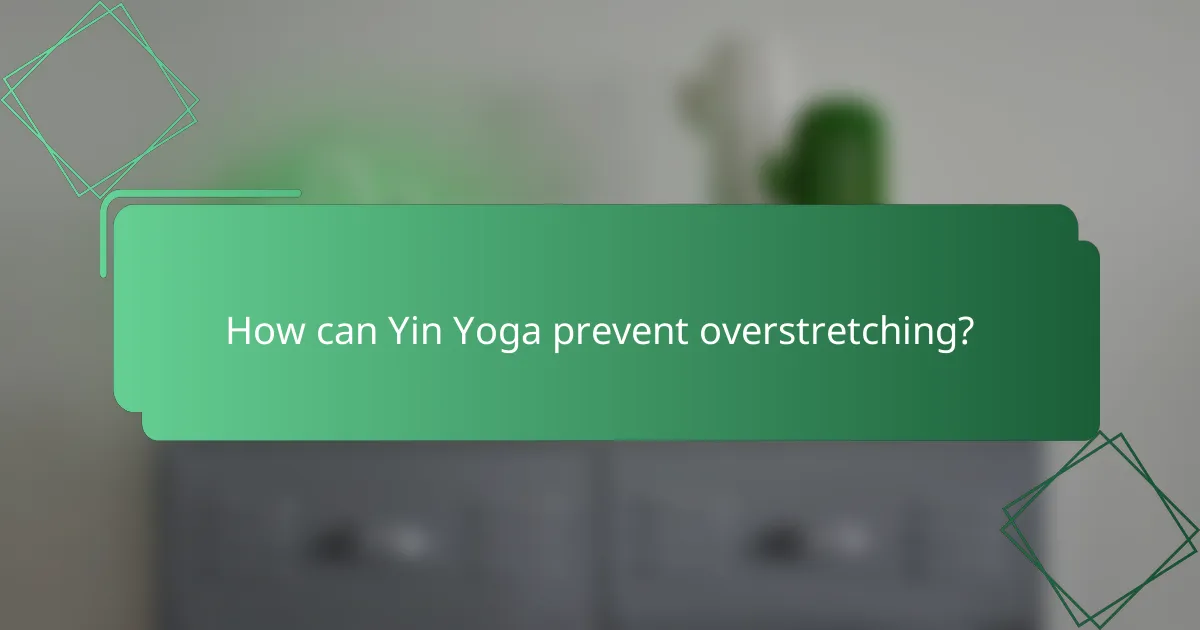
How can Yin Yoga prevent overstretching?
Yin Yoga can prevent overstretching by emphasizing slow, mindful movements and deep relaxation in poses. This approach allows practitioners to listen to their bodies and avoid pushing beyond their limits.
Focus on alignment
Proper alignment is crucial in Yin Yoga to ensure that the body is supported and safe during each pose. By maintaining correct alignment, practitioners can engage the right muscles and avoid unnecessary strain on joints and connective tissues. Regularly checking alignment helps cultivate body awareness and reduces the risk of overstretching.
Use props for support
Incorporating props such as blocks, bolsters, or straps can enhance stability and comfort during Yin Yoga poses. These tools allow practitioners to modify poses to fit their individual needs, reducing the likelihood of overstretching. For example, using a bolster under the hips in a seated forward fold can provide support and prevent excessive strain.
Practice with a certified instructor
Working with a certified Yin Yoga instructor ensures that you receive personalized guidance on technique and alignment. An experienced teacher can help identify any tendencies to overstretch and provide modifications tailored to your body. This professional support fosters a safer practice environment and enhances your overall experience.
Incorporate gentle transitions
Transitioning slowly between poses is essential in Yin Yoga to maintain control and awareness. Quick movements can lead to overstretching or injury, so aim for smooth, deliberate shifts. For instance, when moving from a seated forward bend to a gentle twist, take your time to adjust your body and breath, ensuring a mindful approach to each position.
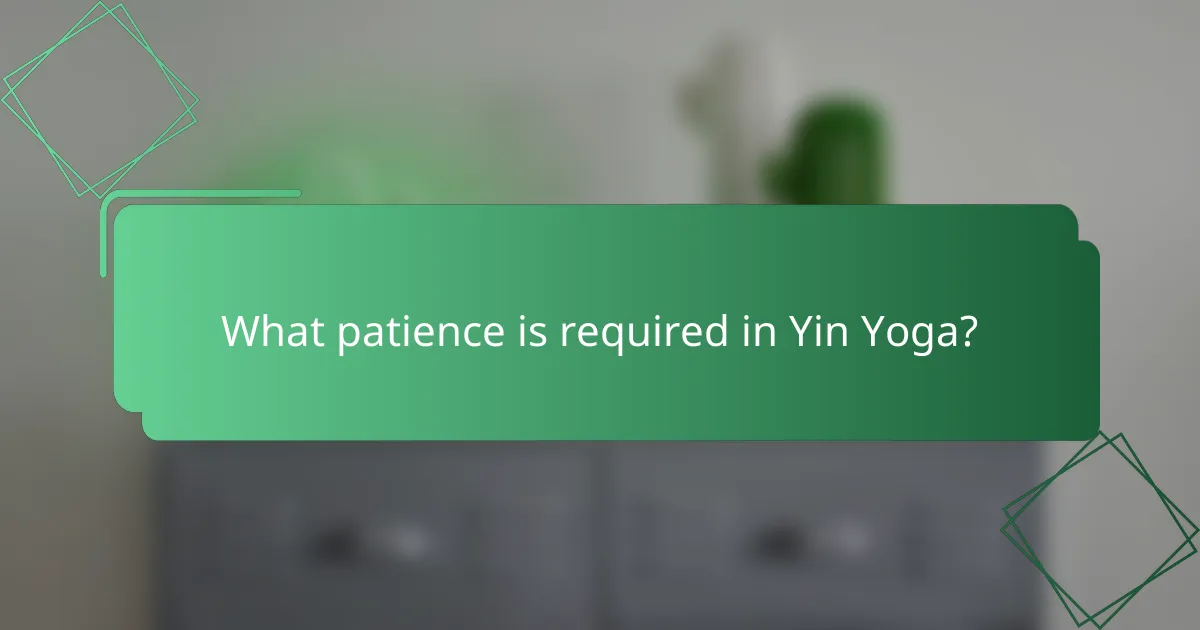
What patience is required in Yin Yoga?
Practicing Yin Yoga requires a significant amount of patience, as it involves holding poses for extended periods, often ranging from three to five minutes or longer. This slow approach encourages deep stretching and emotional release, allowing practitioners to connect with their bodies and minds in a profound way.
Embrace long-held poses
In Yin Yoga, poses are typically held for several minutes, which can feel challenging at first. Embracing these long-held positions helps to target deep connective tissues and promotes flexibility. Start with simpler poses and gradually increase the duration as your body adapts, aiming for a balance between discomfort and ease.
Common poses like the Butterfly or Dragon can be held for three to five minutes, providing ample time to explore sensations and deepen your practice. Remember, the goal is not to force your body but to allow it to open gradually.
Develop mindfulness through breath
Mindfulness is a key component of Yin Yoga, and focusing on your breath can enhance this experience. As you hold each pose, pay attention to your inhalations and exhalations, using them to anchor your awareness and calm your mind. This practice of mindful breathing can help you remain present and patient during longer holds.
Consider using a breathing technique, such as inhaling for a count of four and exhaling for a count of six, to promote relaxation and deepen your connection to the pose. This can make the experience more manageable and enjoyable.
Understand the slow pace of practice
The slow pace of Yin Yoga is intentional, allowing for introspection and emotional release. Unlike more dynamic styles, Yin encourages you to slow down and listen to your body. This can be a significant shift for those accustomed to faster-paced practices.
To adapt to this slower rhythm, set aside dedicated time for your practice without distractions. Aim for sessions of at least 45 minutes to an hour, which allows you to explore multiple poses and fully engage with the experience. Patience will grow as you become more familiar with this meditative approach to yoga.

How does Yin Yoga facilitate emotional release?
Yin Yoga facilitates emotional release by promoting deep relaxation and introspection, allowing practitioners to connect with their feelings. The long-held poses create space for emotional energy to surface, helping individuals process and release pent-up emotions.
Encourages introspection
Yin Yoga encourages introspection by inviting practitioners to remain still in poses for extended periods, typically ranging from three to five minutes. This stillness allows the mind to quiet, fostering a deeper awareness of thoughts and emotions. As individuals sit with their feelings, they often gain insights into their emotional states and patterns.
To maximize introspection, focus on your breath and observe any emotions that arise without judgment. Journaling after practice can also help articulate and process these insights.
Stimulates energy flow through meridians
Yin Yoga stimulates energy flow through the body’s meridians, which are pathways that carry vital energy or “qi.” By holding poses that target specific meridians, practitioners can release blockages and promote a smoother flow of energy. This can lead to a sense of emotional balance and well-being.
For example, poses that open the hips may stimulate the liver meridian, which is associated with anger and frustration. Regular practice can help clear these emotions, leading to a more harmonious state.
Supports stress relief and relaxation
Yin Yoga supports stress relief and relaxation by activating the parasympathetic nervous system, which promotes a state of calm. The gentle stretching and prolonged holds help release tension in the body, making it easier to let go of stress. Practitioners often report feeling more relaxed and centered after a session.
To enhance relaxation, consider incorporating props such as bolsters or blankets to support your body in poses. This can create a more comfortable environment, allowing you to fully relax and experience the emotional release that Yin Yoga offers.
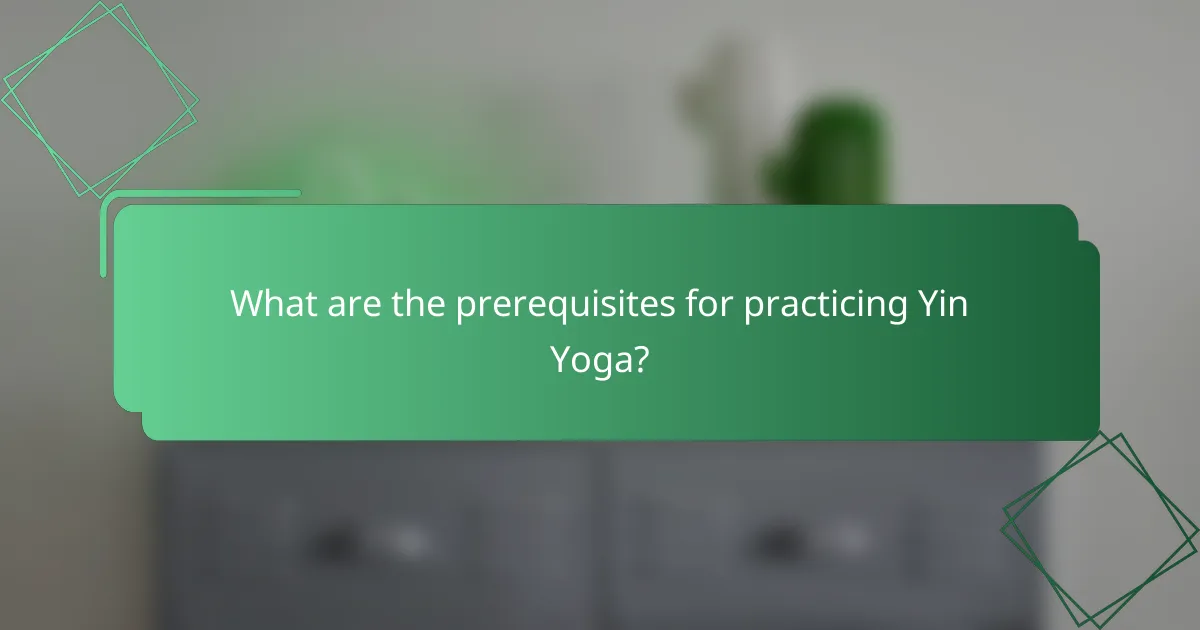
What are the prerequisites for practicing Yin Yoga?
Practicing Yin Yoga requires a foundational understanding of yoga principles and physical readiness for long-held poses. These prerequisites help ensure a safe and effective experience, allowing practitioners to fully engage with the emotional and physical benefits of the practice.
Basic understanding of yoga principles
A solid grasp of yoga principles is essential before starting Yin Yoga. This includes familiarity with concepts such as breath control, body alignment, and mindfulness. Understanding these fundamentals helps practitioners maintain focus and prevent injury during extended poses.
Additionally, Yin Yoga emphasizes the importance of surrendering to the pose and cultivating patience. Practitioners should be prepared to embrace stillness and allow their bodies to gradually release tension, which can lead to deeper emotional and physical benefits.
Physical readiness for long-held poses
Physical readiness is crucial for successfully engaging in long-held Yin Yoga poses, which can last anywhere from one to five minutes or more. Practitioners should assess their flexibility and comfort levels, ensuring they can hold poses without excessive strain. Using props like blocks or bolsters can provide support and enhance comfort during practice.
It’s important to listen to your body and recognize when to ease out of a pose. Overstretching can lead to injury, so maintaining a balance between effort and relaxation is key. Practitioners should gradually increase their hold times as they become more comfortable with the practice, allowing their bodies to adapt over time.
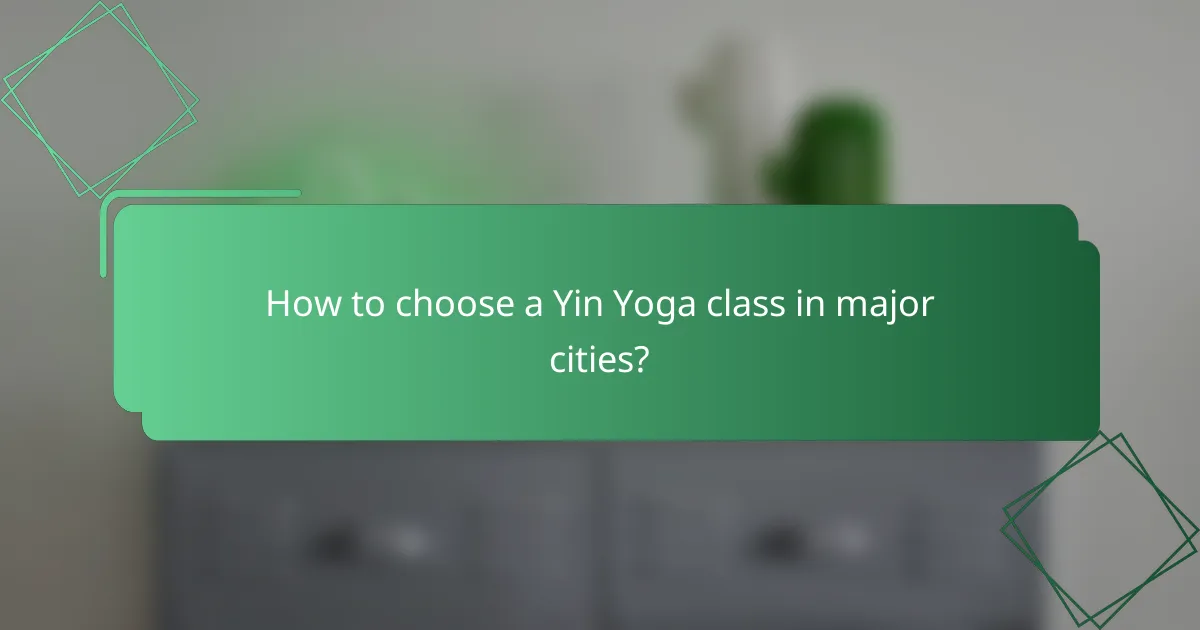
How to choose a Yin Yoga class in major cities?
Choosing a Yin Yoga class in major cities involves evaluating instructors, reading reviews, and considering the class environment. These factors will help ensure a positive experience that aligns with your personal goals and comfort level.
Research certified instructors
Start by looking for instructors who are certified in Yin Yoga, as this ensures they have the necessary training and knowledge. Many cities have directories or websites where you can find qualified teachers, often detailing their experience and teaching style.
Consider reaching out to instructors directly to ask about their approach to Yin Yoga, especially regarding overstretching and emotional release. This can help you gauge if their philosophy aligns with your needs.
Check class reviews and ratings
Reading reviews and ratings from previous students can provide insight into the quality of the class and the instructor. Look for feedback on aspects like the instructor’s ability to guide students through poses and their attentiveness to individual needs.
Platforms like Google, Yelp, or local yoga community forums can be valuable resources for finding honest reviews. Aim for classes with consistently high ratings, ideally above four stars, to ensure a positive experience.
Consider class size and environment
The size of the class can significantly impact your Yin Yoga experience. Smaller classes typically allow for more personalized attention, which is crucial in a practice that emphasizes deep stretching and emotional release.
Additionally, consider the studio environment. A calm, quiet space with appropriate lighting and temperature can enhance your practice. If possible, visit the studio beforehand to assess the atmosphere and ensure it feels welcoming and conducive to relaxation.
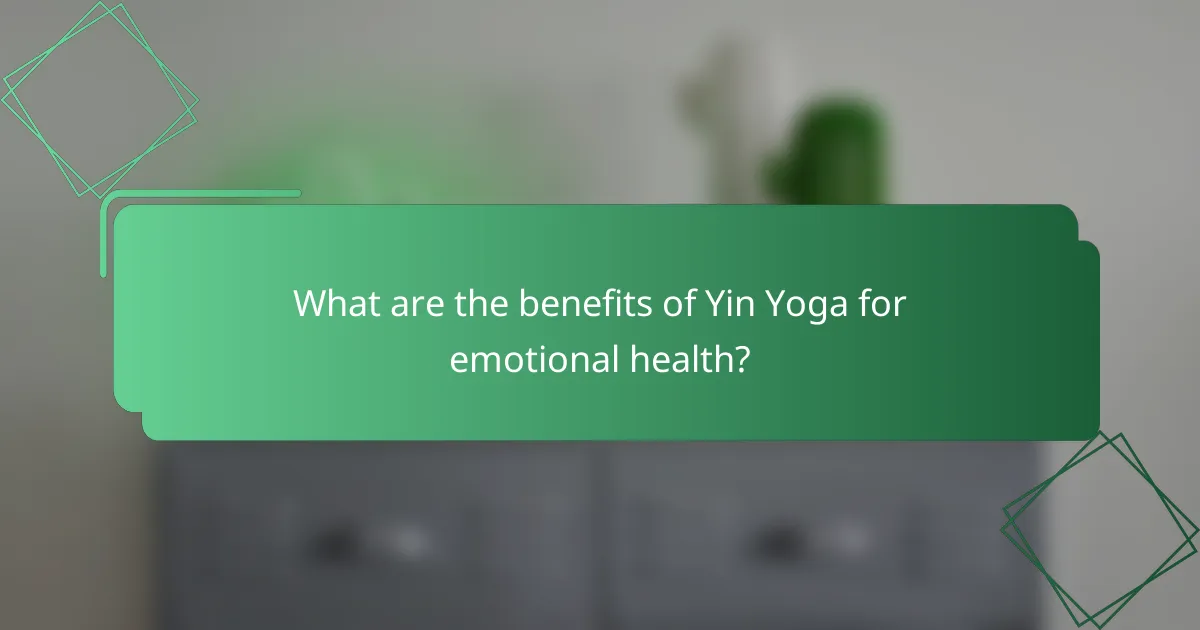
What are the benefits of Yin Yoga for emotional health?
Yin Yoga offers significant benefits for emotional health by promoting relaxation and emotional release. This practice encourages deep introspection, allowing individuals to connect with their feelings and cultivate emotional resilience.
Enhances emotional awareness
Yin Yoga enhances emotional awareness by encouraging practitioners to slow down and tune into their bodies. The long-held poses create space for self-reflection, helping individuals recognize and process their emotions as they arise.
During Yin Yoga sessions, practitioners often experience a range of emotions, from calmness to discomfort. This emotional spectrum can serve as a valuable tool for understanding personal triggers and responses, ultimately fostering greater emotional intelligence.
To maximize emotional awareness, consider setting an intention before each practice. This could involve focusing on a specific emotion or situation, allowing you to explore it deeply during your session. Remember to approach each feeling with patience and non-judgment, as this is key to emotional growth.

